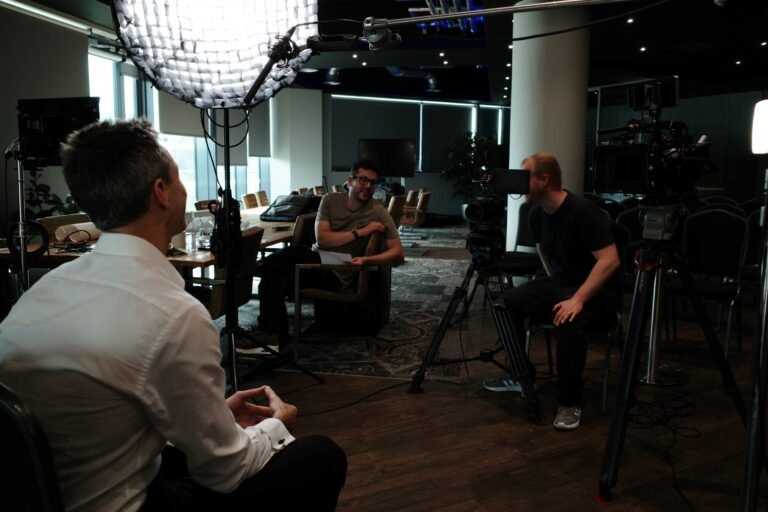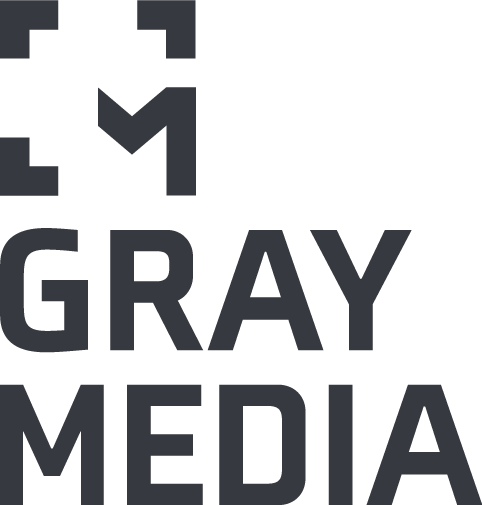Imagine a key opening a door to understanding; that’s what animation can do for complex ideas. You can turn dense data and abstract concepts into engaging visual narratives that are easy to grasp. Animation breaks down these intricate subjects into relatable elements, making them digestible for a wide audience. It also encourages active participation, letting viewers explore at their own pace. But how exactly does this medium simplify knowledge and enhance engagement? Let’s explore the ways animation can demystify even the most complicated topics.
Key Takeaways
– Animation transforms complex ideas into engaging narratives, enhancing understanding through visual storytelling.
– Visual metaphors and dynamic representations simplify intricate data, making it more intuitive.
– Interactive elements and quizzes transform passive viewers into active participants, increasing engagement.
– Animated process mapping breaks down intricate sequences into digestible steps for better comprehension.
– Animation captures attention and simplifies concepts, making them quickly understandable and memorable.
Visual Storytelling
Visual storytelling is a powerful technique that turns complex ideas into engaging and easily digestible narratives. By leveraging character development and narrative techniques, you can transform abstract concepts into relatable and compelling stories. This approach not only simplifies the complexity but also enhances audience engagement, making your message more memorable.
First, focus on character development. Create characters that embody the core aspects of your idea. These characters act as proxies for your audience, experiencing and grappling with the concepts you’re presenting. Their journeys and transformations provide a human element, making the narrative more relatable.
Next, use narrative techniques to structure your story. Start with a clear introduction that sets the stage, followed by a conflict that introduces the main idea. Use rising action to explore deeper into the concept, and then reach a climax where the core message becomes evident.
Simplifying Data
Data can often feel like an overwhelming sea of numbers and statistics, but simplifying it is essential for effective communication. By leveraging animation, you can transform complex data into digestible visual representations. Imagine replacing dense spreadsheets with animated charts that dynamically illustrate trends and patterns. This approach not only clarifies the data but also makes it more engaging for your audience.
Using visual metaphors is another powerful technique. For instance, instead of displaying raw numbers, you could animate a growing tree to represent increasing market share. This visual metaphor instantly conveys the concept without requiring viewers to sift through data points.
Animation allows you to break down intricate datasets into simple, intuitive elements that everyone can understand. Moreover, animations can highlight key insights by focusing the viewer’s attention on the most critical parts of the data. You can use colour, movement, and shifts to guide the audience through the information logically and coherently.
This method makes it easier for them to grasp complex ideas quickly. Incorporating these techniques into your data representation strategy won’t only simplify the information but also captivate your audience, making the data more memorable and impactful.
Enhancing Engagement
Engaging your audience is paramount when presenting complex ideas, and animation can be a game-changer in this regard. By leveraging interactive elements, you can transform passive viewers into active participants, greatly boosting audience retention.
Animations allow you to visually represent abstract concepts, making them more relatable and easier to grasp.
Integrating clickable hotspots, quizzes, and branching scenarios within animations can foster a more immersive experience. These interactive elements not only keep your audience engaged but also encourage them to explore the content at their own pace, enhancing their understanding and retention.
Moreover, animation’s ability to combine text, audio, and visuals creates a multi-sensory experience, catering to different learning styles.
For example, a well-designed animated video can break down a complicated algorithm into digestible steps, using visual storytelling to illustrate each phase clearly.
Clarifying Processes
While enhancing engagement is essential, another significant advantage of animation lies in its ability to clarify intricate processes. When you’re dealing with complex systems or multifaceted workflows, static images or text alone often fall short. That’s where animation shines.
By using process mapping and dynamic illustrations, you can break down complicated sequences into digestible, visual steps.
Think about it: rather than reading through a dense manual or squinting at a convoluted diagram, wouldn’t you prefer watching a clear, animated walkthrough?
Animation allows you to:
– Visualise each step: You can see the progression of actions, making it easier to understand the overall flow.
– Highlight key elements: Important components or actions can be emphasised, ensuring crucial information isn’t overlooked.
– Simplify complex interactions: Dynamic illustrations can show how different parts interact, offering a more intuitive grasp of the system.
Educational Applications
Animation isn’t just a tool for entertainment; it’s a powerful medium for educational applications too. By leveraging visual storytelling, you can transform complex academic concepts into easily digestible content.
Imagine trying to explain the intricacies of cellular biology or the nuances of quantum physics through static text alone. Animation can break down these topics into engaging, bite-sized pieces, making learning more interactive for students.
Interactive learning isn’t just a buzzword; it’s a proven method to enhance cognitive retention. When you incorporate animated elements into educational materials, you create an immersive experience that captures attention and aids memory.
For instance, an animated video on the water cycle can show real-time changes, making it easier for students to grasp the process compared to traditional diagrams.
Moreover, animations can adapt to various learning styles, whether visual, auditory, or kinesthetic, ensuring that you reach a broader audience.
By integrating quizzes and interactive elements within the animation, you can actively involve students in the learning process, making it more effective.
Marketing Benefits
Expanding beyond educational applications, animation also offers significant advantages in the domain of marketing. By leveraging animation, you can enhance brand awareness and guarantee your message is both memorable and engaging.
Animation’s ability to simplify complex concepts through visual storytelling helps your audience quickly grasp your value proposition, driving higher audience retention.
When it comes to marketing, animation can:
– Capture Attention: Animated content stands out in a crowded marketplace, drawing eyes to your message.
– Explain Products: Complex products or services can be broken down into digestible, visually appealing segments.
– Boost Engagement: Interactive and animated content encourages viewers to interact, share, and discuss.
By incorporating these elements, you’re not just telling your audience about your product; you’re showing them in a way that’s easy to understand and hard to forget.
Additionally, animation can be tailored to fit your brand’s voice and style, creating a cohesive and recognizable image. This consistency strengthens brand awareness, making your brand more memorable.
With the right mix of creativity and technical proficiency, animation becomes a powerful tool in your marketing arsenal, guaranteeing your messages resonate and stick with your audience.
Scientific Visualisation
Scientific visualisation leverages animation to transform complex data into comprehensible visual formats, making intricate concepts accessible to a broader audience. By utilising advanced data representation techniques, you can create visually compelling animations that highlight key scientific findings.
Incorporating interactive elements allows the audience to engage with the material, exploring data layers and variables on their own terms.
3D modelling brings a new dimension to scientific visualisation, enabling you to depict structures and phenomena with remarkable depth and accuracy. This approach reduces cognitive load by presenting information in an intuitive, easily digestible manner.
Visual analytics enhance audience understanding by combining data analysis with visual storytelling, making patterns and trends immediately apparent.
Multimedia integration enriches the narrative, blending text, graphics, and sound to create a cohesive, immersive experience. Using narrative techniques, you can guide viewers through complex ideas step-by-step, ensuring they grasp foundational concepts before moving on to more intricate details.
This method not only educates but also captivates, turning abstract data into a compelling story that resonates with your audience. By mastering scientific visualisation, you make complex scientific ideas not just accessible, but engaging and memorable.
Frequently Asked Questions
How Can Animation Be Used to Improve User Experience in Mobile Applications?
You can use animation to improve user experience in mobile applications by enhancing user engagement and design aesthetics. Effective animations provide visual storytelling that guides users through actions, ensuring technical proficiency and boosting audience engagement.
What Software Tools Are Commonly Used for Creating Educational Animations?
Think of animation software as your magic wand. Tools like Adobe Animate, Toon Boom, and Blender transform complex concepts into engaging visual stories. These educational tools enhance audience engagement and elevate your technical proficiency in visual storytelling.
How Does Animation Influence Viewer Retention Compared to Static Images?
Animation boosts viewer engagement and reduces cognitive load, making it more effective than static images. By combining technical proficiency and visual storytelling, you can enhance audience engagement and improve retention of complex concepts.
Can Animation Be an Effective Tool in Virtual Reality Environments?
Animation can be an effective tool in virtual reality environments because it enhances immersive storytelling and includes interactive elements. You’ll engage the audience more deeply, leveraging technical proficiency and visual storytelling to make complex ideas more accessible.
What Are the Budget Considerations for Producing High-Quality Animations?
When considering the budget for high-quality animations, focus on cost analysis and production timelines. You’ll need technical proficiency for detailed work, visual storytelling to captivate, and audience engagement strategies to guarantee your investment meets its goals.
Conclusion
Animation acts as a bridge, transforming complex ideas into vivid, accessible narratives. By simplifying data, enhancing engagement, and clarifying processes, it turns dense information into an enchanting journey. Whether for education, marketing, or scientific visualisation, animation’s power lies in its ability to make intricate concepts feel like a well-told story. Immerse yourself in the world of animation and watch as the fog of confusion lifts, revealing a landscape of understanding and clarity.






